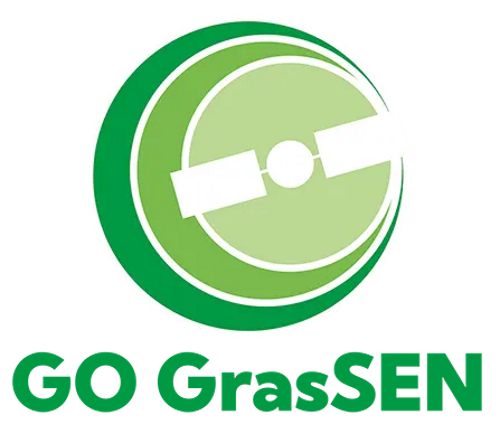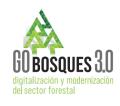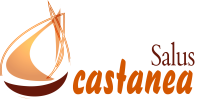
GRASSEN Operational Group: Platform to support the management of Mediterranean pastures using near and remote sensors
- Type Operational group
- Status In progress
- Execution 2021 -2023
- Assigned Budget 255.500,00 €
- Scope Autonómico
- Autonomous community Andalucía
- Main source of financing CAP 2023-2027
- Project website GO GRASSEN
The GrasSEN project represents a high level of innovation, incorporating low-cost remote sensing technologies and developing artificial intelligence-based models for assessing pasture quality. The technological advancement presented in this project provides farmers with a tool that provides accurate and relevant information on the quality of pastures on their farms. Based on this information, they can make decisions that directly affect livestock management and feeding.
In this sense, it represents a major technological advance compared to current technologies, processing large volumes of data and providing spatial information that reflects differences in the quality and characteristics of the farm's pasture. Digitalization in the agricultural and livestock sector is essential, as technology has evolved rapidly in recent years, disrupting many of the processes that were previously used, radically changing food production and the overall functioning of the value chain. Therefore, this project will improve traditional processes by allowing farmers to optimize farm resources and procedures while sustainably improving performance. The proposed innovation will provide farmers with real-time information on the quality of the forage consumed by their animals throughout the entire crop cycle on their farm.
In this way, remote monitoring of feed quality will contribute to maximizing the utilization of nutrients by livestock. Likewise, to ensure optimal feed utilization, it is essential to determine the most appropriate time for animals to graze on different farms, based on available resources. The energy value provided by forage, along with optimal nutritional content in protein, fiber, and digestibility, allows for adequate utilization and reduced feed costs.
In turn, the use of Sentinel and other sensors for real-time quality estimation of pastures used for animal feed will allow for space-time livestock grazing planning, real-time knowledge of the pasture's energy supply to calculate carrying capacity and adjust the supplement to be provided to livestock. Regarding the impact on productivity or sustainability, the presented innovation has a direct impact, as it allows for maximizing productivity by taking into account many factors that influence pasture productivity and quality, analyzed through new technologies and real field data. It also guarantees sustainability throughout its implementation and once the generated tool is in use.
The dehesa constitutes the most characteristic and representative agrosilvopastoral system in Europe, with 4.5 million hectares in the Iberian Peninsula, 60% of its surface area located in Andalusia and Extremadura. In addition to its surface area, it has a significant impact on the socioeconomic development of areas with limited production and a limited industrial structure, generating niches for specialized labor and high-value-added production. Andalusian Law 7/2010 of July 14, on the Dehesa, defines the dehesa as a farm consisting mainly of pastureland, subject to a land use and management system based primarily on livestock grazing, fruits, and branches, as well as other forestry, hunting, or agricultural uses.
For its part, a dehesa formation is considered to be any forest area occupied by a tree layer, with a cover fraction ranging between 5% and 75%, mainly of the genera Quercus (holm oaks, cork oaks, and gall oaks) and Olea (wild olive trees), which allows for the development of a herbaceous layer for livestock or game species. According to the Dehesa Master Plan, Andalusia has 940,622 hectares of dehesa, distributed across more than 14,000 properties. The regions of Los Pedroches and Alto Guadiato contain the largest continuous area of dehesa on the Iberian Peninsula. Managing herbaceous pastures in dehesas and properly planning their use are not simple tasks. In addition to the high spatial variability of pastures, associated with soil diversity, variable terrain geomorphology, the presence of trees, and diverse agricultural uses, there is also a high intra- and interannual variability linked to the specific characteristics of the Mediterranean climate. Rational management of pastures in the dehesa would benefit from the availability of quantitative and qualitative information on this resource and its spatial and temporal variation.
This would facilitate decision-making on crucial aspects of the pasture, such as grazing planning, the provision of supplementary feed to pastures, the organization of forage crops to provide quality feed for livestock at key times, pasture fertilization, and seed bank enrichment. Estimating pasture production and quality using traditional methods (field sampling and laboratory analysis) is expensive, making it unviable for many livestock farms and a service that is requested only occasionally.
Furthermore, information is not provided immediately, as there is often a delay between sampling and obtaining results, which limits its usefulness in short-term decision-making. The variety of existing and currently operational sensors, whether mounted on nearby and/or remote platforms, have the capacity to provide a large volume of data on the territory at low cost and with a spatial and temporal resolution appropriate to the needs of pasture farms. These multispectral, hyperspectral, and/or radar images implicitly contain information on the productive characteristics of pastures, and this information can be extracted using artificial intelligence techniques such as data mining. This project aims to obtain information on the productive characteristics of pastures in the pastureland from images obtained by the Sentinel satellites (1 and 2) of the EU Copernicus program, appropriately combined with images obtained throughout this project by multispectral sensors mounted on unmanned aerial platforms and field data.
Sentinel images were chosen as the basis for their open access and adequate spatial resolution (10 and 20 m pixel bands), spectral resolution (a multispectral sensor with 13 bands), and high temporal coverage (revisit frequency of about 5 days). The dynamic information generated this way on the production and quality of the pastures in the dehesa will be made available to end users, livestock farmers, owners, and dehesa managers, through the development of a web platform and a mobile application.
Finally, for a pilot pasture farm, we will illustrate how to use the dynamic information contained in the web platform to manage pastures and plan their use through grazing or mowing. The development of this tool could therefore contribute to more efficient and sustainable management of pastures in the pasture.
- Activity 0: Project coordination and management.
- Activity 1: Gathering information and analyzing previous experiences with the application of remote sensing and sensors to pasture management.
- Activity 2: Collection of georeferenced data on pasture production, structure and quality, along with information from remote (Sentinel 1 and 2) and near-field (multispectral and hyperspectral sensors and Lidar data) spatial sensors.
- Activity 3: Development of mathematical models that allow estimating, based on information from near and remote sensors, the standing production of pastures, their structure, yield and quality.
- Activity 4: Validation of the models developed in pilot farms.
- Activity 5: Development of a web platform prototype that hosts the information generated on pastures.
- Activity 6: Development of a mobile application that allows users to consult information about pastures contained in the web platform.
- Activity 7: Using the information provided on the web platform for decision-making on pasture management: developing simulations.
- Activity 8: Communication of the results obtained.
- Activity 9: Writing the final report.
The overall objective of this project is to develop a platform to support the management of Mediterranean pastures by integrating information from near and far sensors combined with field data.
To this end, previous experiences with sensorization and remote sensing will be analyzed, georeferenced data on production, structures and quality of pastures and forages will be collected, mathematical prediction algorithms will be developed, as well as a web platform and app that integrate the information and allow for real-time decision-making.
- Coordinator/entity name: Agri-Food Research and Quality Center of the Pedroches Valley (CICAP)
- Postal address: Dehesa Boyal Industrial Estate, 8, Plots 10-13. 14400, Pozoblanco, Córdoba
- Coordinator/entity email: bpazuelo@cicap.es
- Telephone: 957 116 254
- Centro de Investigación y Calidad Agroalimentaria del Valle de los Pedroches (CICAP)
- UNIVERSIDAD DE CÓRDOBA (pfernandez@uco.es)
- CENTRO DE INVESTIGACIONES APLICADAS AL DESARROLLO AGROFORESTAL, S.L. (IDAF) (iclavero@idaf.es)
- DEHESAS DE BENAJARAFE (a.rodriguez@langayatlantico.com)
- SMART GEOSOFTWARE (amr@sgeos.com)
- Centro de Investigación y Calidad Agroalimentaria del Valle de los Pedroches (CICAP)






